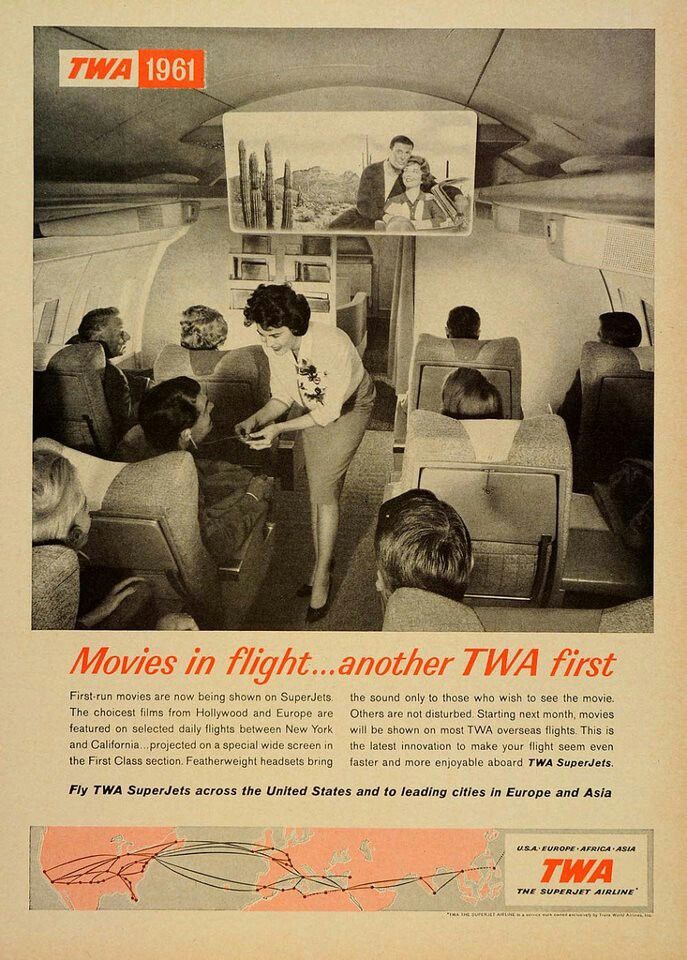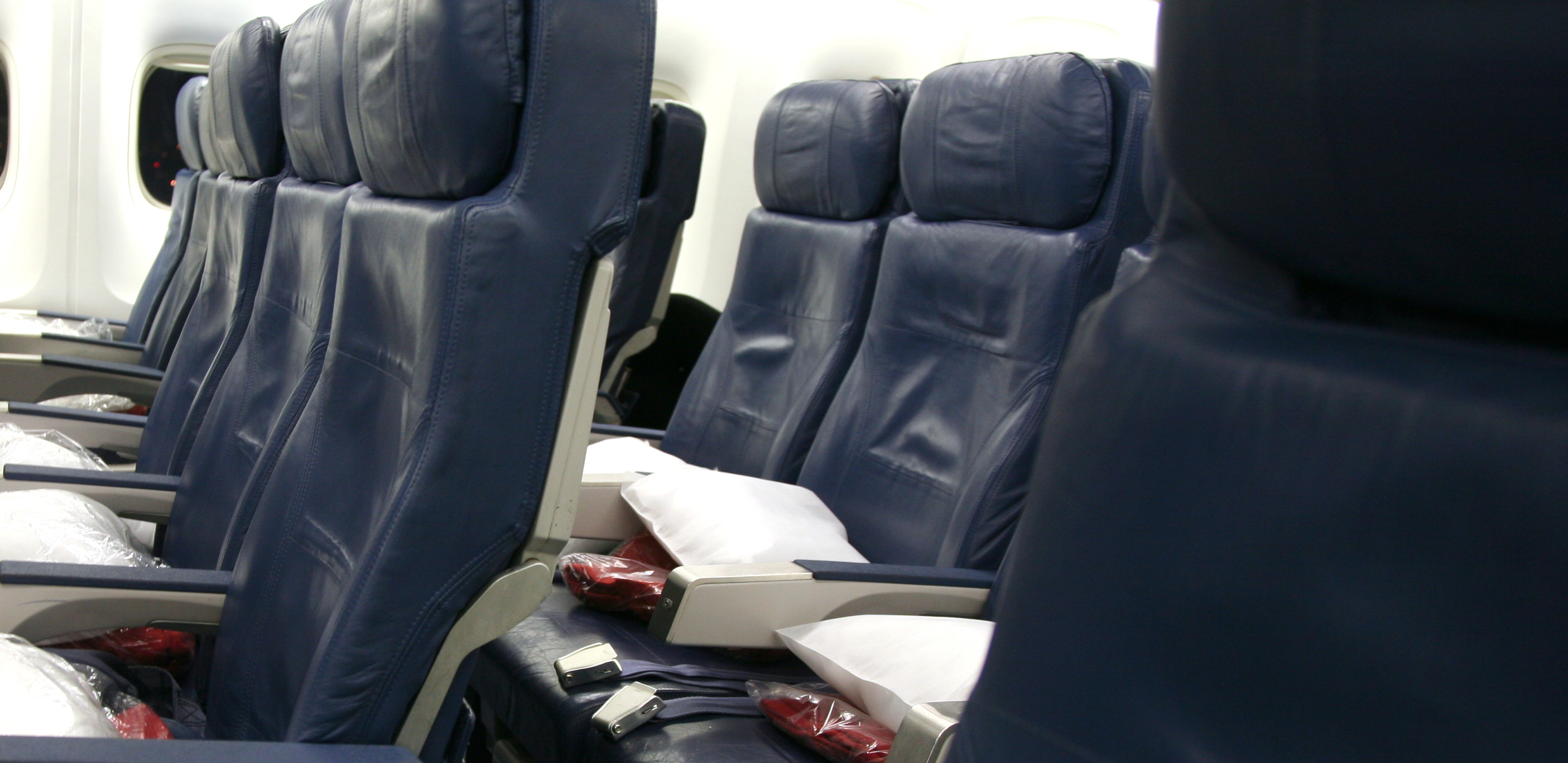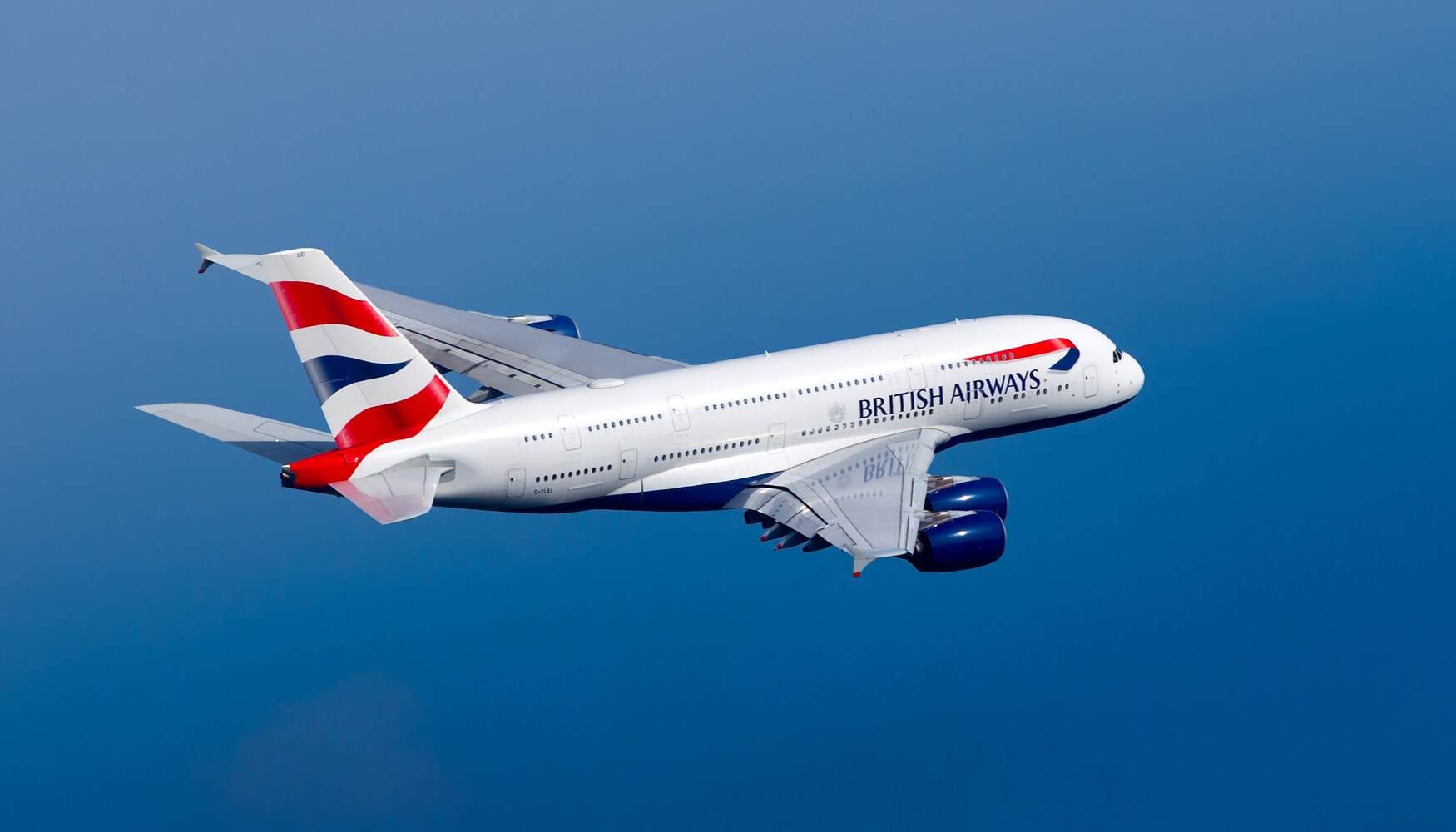Squinting At a Tiny Screen–In-Flight Entertainment Through the Years

Source: TWA
Greetings from the past. You’ve stumbled upon FlyerTalk’s weekly Throwback Thursday post. If you’re also an aviation history nerd, check out the rest of our posts under the #ThrowbackThursday tag.
At the airport, you can usually spot two types of flyers: the pack rat that brings every type of entertainment available on a plane to be ready for anything, and those who travel light. They don’t need to carry on extras: they’ll be snoring by the time the plane takes off.
I fall into that later category. Apparently, 17% of us prefer to grab some shut-eye on a long international flight. For those that pack light and don’t want to rest though, what is there to do? That brings us to another type of traveller: the binger who can fit six back-to back movies in on a 17-hour flight. That’s a feat in itself, and let’s face it, not a bad use of flight time.
Whatever type of flyer you are, airlines do what they can to keep you entertained, fed and watered on long haul flights. Gone are the days of a single screen per six rows of seats (well, mostly) and entertainment offerings seem to improve each year.
So, how did people used to entertain themselves on long haul travel?
It All Started with ‘Howdy Chicago’
The first documented use of the ‘in-flight movie’ was as early as 1920, when a Aeromarine Airways flight showed a promotional reel which encouraged its passengers to see the bright lights of Chicago.
During those early flights in the history of flying, entertainment was usually limited to chatting to your (hopefully) interesting seatmate, or filling out a complementary postcard to send to a friend.

Source: TWA
The Sixties – Set to Impress
It wasn’t until the 1960s that entertainment in the air began to, ahem, take off. Once 16mm film reels became widespread – much more portable than earlier counterparts – it was easier to offer in-flight movies to patrons. TWA became the first airline to utilise the pneumatic headset for individual customers, which did a reasonable job of blocking out the noise of the airplane, though they were replaced in the late 1970s by electronic versions.
Related: Virtual Reality Makes It to First Class
The 747 Meant Space to Party
The 1970s are fondly remembered for a few other reasons – and not just for the interesting outfits of the flight attendants. In 1970, the first 747 commercial flight – operated by Pan Am – took place. Complete with a spiral staircase, the 747 meant more space to relax, and to play. In the golden age of aviation, in-flight bars and lounges made their way into the interiors of several major airlines, and Southwest Airlines even used to hand out bundled full-sized bottles of booze to their passengers. Braniff was the first airline to introduce in-flight video games, long before the introduction of the individual video screen. In 1975, it made Pong available to its passengers on the original Atari system.
A Hazy Approach to Keeping Busy
Of course, once upon a time, smoking was still allowed on planes. Though it could hardly be referred to as entertainment, it certainly offered a way to while away the long hours of an international flight, even if it did mean your fellow passengers exited the aircraft with a distinct scent of nicotine.
A Whole New World of Entertainment, Right in Front of You
It was 1988 when the revolutionary seatback screen was introduced on Northwest Airlines. At 2.7 inches wide, these were a far cry from the systems we see today. Over the years, we’ve seen vast improvements in the availability – and quality – of seat back entertainment. Today, many airlines over thousands of movie titles and TV shows – in hundreds of different languages – more than you could ever hope to watch, even as a frequent traveller.
On some airlines, you can play games against your seatmate, or send them a message. A number of major airlines offer wi-fi at inflated, rather than astronomical, cost. It’s easier than ever to keep in touch with those on the ground while flying – removing one of the last acceptable escapes from technology.
As an aside, those seemingly simple little seatback TVs don’t run cheap. Even for a basic set up, you’re looking at a cost of at least $3M per plane – or $10,000 per unit, plus additional system costs. There is a reason why a number of low-cost carriers don’t bother to utilise them, not least the extra weight they add to the aircraft.
Fun for the Whole Family
As a kid, do you ever remember receiving one of those adorable little children’s kits while flying? These, pleasingly, have remained available on a number of airlines – even as little eyes tend to remain glued to the now ubiquitous seat back screens. Emirates provide a beloved series of animal themed toys, bags and activities on their flights, and Air New Zealand (Jet Cadets Kit) and Qantas (the Joey Club) activity kits both rate highly amongst the toughest critics. If it’s entertainment for the parents that’s being sought, Etihad even offer a nanny to look after the littlest flyers. That way, you can catch up on the latest releases without worrying if little Timmy is bored, and poised to wreak havoc on your unsuspecting planemates.
Are the Screens Set to Go?
American Airlines announced in 2018 that it would not offer seatback entertainment on its new planes. While this seems like an odd move, it’s made in the context of a new, technological reality – everyone has their own devices, with the airline claiming some 90% of travellers carry a device of some sort (and some airlines rent them out, loaded with entertainment). Given some seatback screens have (apparently unactivated) cameras embedded in them, some are welcoming the move. While both Alaska Airways and United have announced similar claims, this seems to be a largely American phenomenon. I don’t believe we are likely to see screens disappear anytime soon from some of the most popular long haul stalwarts.
The Future of in Flight Entertainment
Things have certainly changed over the last 50 years. Whilst flying, we can now find out exactly where we are, and on many airlines, message our friends and family to tell them – or even send them a selfie.
While Emirate’s digital amenity kit has died a quiet death, airlines will continue to find ways to keep you quiet whilst getting from A to B. Whether that’s through promoting the use of tablets and personal devices, ensuring personalisation of in-flight entertainment offerings or dazzling you with dining experiences, I can’t wait to see what the next wave of in-flight entertainment brings.























I took an Asiana flight in the mid 90's. The Flight attendants performed magic tricks for the IFE !
Not too keen on travelling long haul on a plane without IFE. Short haul I'll have my mobile which is fine for a couple of hours, but 24hrs on the Kangaroo route or even 6 to 10 going TATL I'd want a bigger screen and I don't want to carry my tablet around with me, nor pre-load it with content. I like the first run movies some airlines have and I get to catch up on ones I've missed over the past few months too. And what do families do if they only have one tablet amongst 2 or more kids? Even if they had onboard streaming wifi, people would still need screens.
Please don't take those in-seat screens away. I hate airlines that do this as all I want is have a continuous show of the flight map in front of me. And for that, I don't want to have fumble around with my mobile or ipad.
Look at how spacious those seats are in the TWA article. God I wish I could fly to the 1950s.